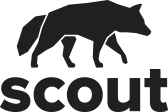Version 1 Product Updates
Want to Roll Your Own Crowdfunding Site? Here’s What You Need to Know (Pt. 1)
• 4 minutes read
Last week, we unveiled our Scout pre-order site to the world. Scout is a hassle-free, do-it-yourself home security system - you can check it out at www.scoutalarm.com. We took a gamble with the Scout project and “rolled our own” crowdfunding site. Similar to Lockitron, Scout would not be allowed on Kickstarter since our products haven’t been produced yet, so we had to forgo that avenue for fundraising and strike out on our own. Luckily, Lockitron made our path a little easier by open-sourcing its project. The Scout project is, thus far, not wildly oversubscribed like Lockitron, but we’re doing well for being nine days in. What we’ve realized in the process is that there’s not a lot of information available on what it takes to roll your own crowdfunding site. We’re one of only a handful of companies that has taken a shot at it, so we want to pass along what we’re learning as we go. Hopefully, this post will make it a little easier for the next company that follows behind us. Here’s what we have learned so far:
Forking Self-Starter is a Nice Start, but There is Plenty of Programming to be Done
The Lockitron guys have given everyone an awesome starting template with the open-source Self Starter site on Github. But, beyond the elements that every crowdfunding project needs, there is a lot of customization that you are going to want to do to make it suitable to your project’s needs. For instance, Self Starter doesn’t account for ordering more than one type of item from your site. The data structure is setup for ordering various quantities of one product. You probably shouldn’t tackle rolling your own crowdfunding page without a knowledgeable developer that has a week or two of time to devote to it.
Your Press Plan is Paramount, Treat it as Such
Without the luxury of a built-in platform of users that Kickstarter has, you are relying on press and your social media following to drive eyeballs. Start building your following yesterday. When it’s time, take the days or weeks necessary to build an exhaustive list of relevant press contacts. Be specific with why you chose them (did they cover a crowdfunding project? a similar startup?) and make your outreach to them as personal and relevant as possible.
A PR Person is Worth Her Weight in Gold, If You Can Swing It
Having someone in your camp that has done a big press push before is a huge plus. You may feel like your team can handle it, but once you get a few decent press hits, you’re going to start getting buried in emails. A quality PR person will keep you on track by keeping the outreach going, keeping you informed about press hits, routing your follow-up questions and, most importantly, alerting you when a journalist needs the story ASAP.
The First Few Hours are Anti-Climactic
After a few weeks of sleepless nights preparing for launch, you’ll be more than ready to unveil your project to the world. The morning of, you’ll be scrambling to get your press release to everyone on your list. Then, you wait…and wait. Be prepared to sit around for a few hours or the better part of the day staring at a goose egg on your Google Analytics dashboard. It will happen and it’s nerve-wracking. Be ready for it.
You’ll Need More Manpower Than You Think
Building on what we said earlier about a PR rep, you will keep a team of five to six people very busy in the first few days if the outreach is going well. You will likely get hundreds of customer service emails. We have spent hours, daily, responding to everyone. If you use oLark, you will have a fair amount of live chats going at once, too. Then, you have social media you’ll need to attend to. Then, you may have site issues. Make sure you have the manpower (even if it’s your buddies and you pay them in beer) to support your launch.
Make Sure You Load Test Your Site
If you are managing the hosting on your app, be sure to load test it prior to launch. You want to have a sense of what your site can handle and how you will need to scale if you get a sudden rush. We are hosted on heroku and used Blitz (free add-on) to see how the site reacted with 250 or less concurrent users. Plus, it’s a good indicator of where you can start to cache. We optimized the site to use memcached with dalli_store, and created a Cloudfront distribution for serving up our assets. (many tutorials exist, but something to be aware of is Cloudfront mirroring static versions of your site https://forums.aws.amazon.com/thread.jspa?messageID=420936񦱈)
Figure out Your Position on International Shipping and Rates in Advance
You will be asked if you ship internationally and whether your products (if they’re electronics) will work abroad. Figure it out where you will be shipping and where you won’t. People will ask and they will want details.
Have a Plan for People Who Want to Distribute Your Product
If your launch is going well, lots of emails from around the globe are going to flow in asking if you have a distributor yet in X country. Ideally, you will have some documentation detailing what a potential distributor arrangement would look like. However, at the very least, be ready to log their information and find a kind way to tell them that you will get back to them.
Turn On Amazon FPS Payments Well in Advance
We had a testing account for Amazon FPS before we switched over to the real deal. In our hurry to get the site live, we overlooked that Amazon takes one to three business days to verify each aspect of corporate bank account information. Turn on payments a week in advance, minimum. Be prepared with a company bank statement and you IRS EIN letter. Send them both in at the same time. Trust us, it will save you hours of headache.
Don’t Let YouTube Eat Up an Afternoon
Unless you have a Vimeo Pro account ($199), you will likely upload your demo video to YouTube. What you may not know is that, depending on your status on YouTube, you may not have the option to select the thumbnail image for the starting screen of your video. If you want a product shot at the beginning, that is a problem. YouTube randomly selects three frames from your video for you to choose from. Don’t get roped into trying to do a workaround. You will waste hours. Instead, find someone to recreate their play button in Photoshop and overlay it on a product shot. Then, when someone clicks on the picture, have the picture disappear and have the Youtube video start playing behind it.
Don’t Forget a “Remind Me Later” Button
Lockitron’s self-starter template doesn’t come with a “Remind Me Later” button (yet). This button is crucial. We currently have 200+ people signed up to be reminded later. It is worth investing a couple hours of developement time to get that feature. People are busy and will want to come back to your site when it is more convenient for them, or towards the end of the campaign. Give them that option.
Get a Live Chat Window on Your Site
If someone is confused about an aspect of your product, live chat is often the difference between them abandoning the site and eventually placing an order. You should have one - it’ll definitely bring you more pre-orders.
Watching Google Analytics and Refreshing Your Splash Page Will Become an Addiction
There is no way around it. Just be prepared. You will soon understand the true nature of addiction, if you haven’t experienced it yet in your life.
Don’t Just Roll Your Own Crowdfunding Site Just for the Sake of Doing It
There is a reason that Lockitron applied to Kickstarter before they rolled their own site (and why we would have loved to join, too). Kickstarter has a ton of benefits that have been mentioned elsewhere on the net exhaustively. Don’t overlook them just for the sake of going it alone. Please feel free to ask us any questions below. Also, stop by and see how we’re doing at www.scoutalarm.com.








